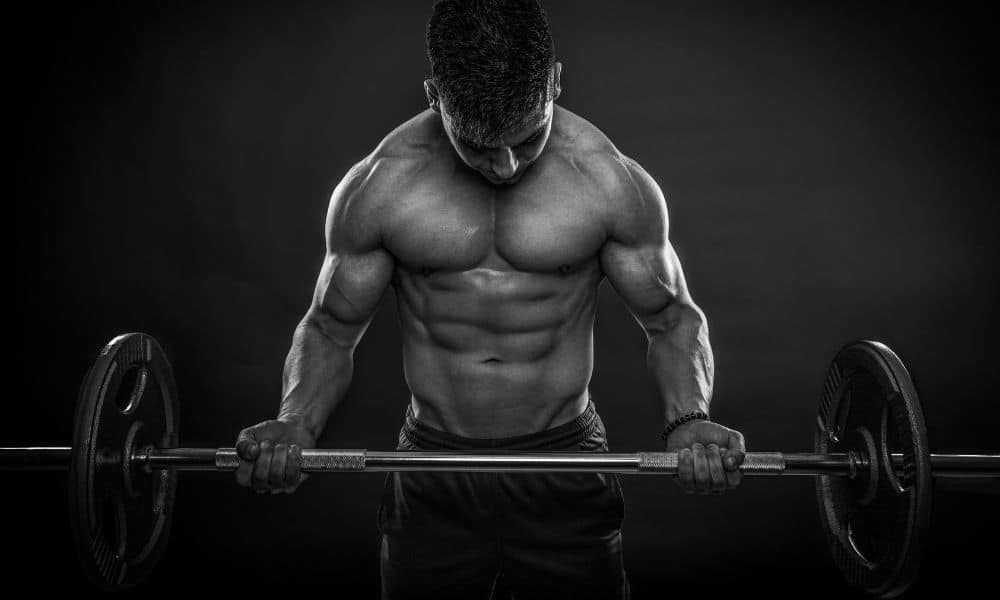Building muscle on a calorie deficit may sound like an impossible task, but with the right approach, you can make significant gains while losing fat. Many believe you need a calorie surplus to build muscle, but the truth is that by fine-tuning your diet, maximizing workouts, and managing recovery, you can achieve both fat loss and muscle growth simultaneously.
In this ultimate guide, we’ll break down how to build muscle on a calorie deficit by focusing on key factors like protein intake, workout intensity, and lifestyle adjustments.
What Is a Calorie Deficit?
To begin with, let’s define a calorie deficit. It’s the state in which you consume fewer calories than your body needs to maintain its current weight. A calorie deficit is essential for fat loss, as it forces your body to burn stored fat for energy. However, many people assume that this process makes muscle-building impossible. This isn’t true, as building muscle on a calorie deficit is achievable with the right strategy.
Can You Build Muscle on a Calorie Deficit?
Yes, you can build muscle on a calorie deficit, but it’s all about balance. The process is more complex than when you’re in a calorie surplus, but it’s far from impossible. You’ll need to focus on these core elements:
- Protein Intake
- Strength Training
- Recovery and Rest
Prioritize Protein Intake
The foundation of building muscle on a calorie deficit lies in protein intake. Your muscles need amino acids, the building blocks of protein, to repair and grow after workouts. Without sufficient protein, your body will struggle to retain muscle, let alone build it.
How Much Protein Do You Need?
Aiming for about 1.2 to 1.6 grams of protein per pound of body weight is a good start. This ensures that even while in a calorie deficit, your body has the necessary resources to maintain muscle mass and promote growth. For example, if you weigh 150 pounds, you should consume between 180 to 240 grams of protein per day.
Good sources of protein include:
- Chicken breast
- Lean beef
- Fish like salmon and tuna
- Eggs and egg whites
- Greek yogurt
- Plant-based options like lentils, quinoa, and tofu
Strength Training: Lift Heavy to Build Muscle on a Calorie Deficit
Strength training is the cornerstone of building muscle on a calorie deficit. You want to focus on compound exercises like squats, deadlifts, and bench presses, as they engage multiple muscle groups and stimulate more growth than isolation exercises.
Key Tips for Strength Training on a Calorie Deficit
- Increase Workout Intensity: To compensate for the reduced energy intake, focus on intensity over volume. Lift heavy weights for fewer reps. Aim for 4-6 reps per set, with a focus on reaching muscle failure. This ensures your muscles are sufficiently challenged to grow.
- Progressive Overload: Keep increasing the weights you lift over time. Progressive overload signals your muscles to grow, even in a calorie deficit. Start small but consistently push for more.
- Short, Intense Workouts: Training for 45-60 minutes with high intensity yields better results than longer, less intense sessions when on a calorie deficit.
Prioritize Rest and Recovery
Rest and recovery are crucial to building muscle on a calorie deficit. While you’re in a calorie deficit, your body has fewer resources for recovery, making rest days even more important.
Recovery Strategies
- Sleep: Aim for 7-9 hours of quality sleep per night. Your body repairs muscles during deep sleep.
- Active Recovery: Light activities like walking or stretching help maintain muscle while promoting fat loss.
- Stay Hydrated: Dehydration can impair recovery and muscle growth. Drink at least 8 cups of water per day, and more if you’re active.
Manage Your Deficit for Muscle Gains
When building muscle on a calorie deficit, the size of your calorie deficit matters. If your deficit is too large, your body will burn muscle for energy. To avoid this, aim for a moderate calorie deficit of 250-500 calories per day. This allows for steady fat loss without sacrificing muscle growth.
How to Calculate Your Caloric Needs
To calculate your calorie needs for a deficit:
- Determine your maintenance calories: Use a Total Daily Energy Expenditure (TDEE) calculator to find how many calories your body needs to maintain its current weight.
- Subtract 250-500 calories: This ensures a manageable deficit that won’t drastically affect your energy levels or muscle-building ability.
Nutrition Tips for Building Muscle on a Calorie Deficit
While protein is essential, your overall diet plays a huge role in how well you can build muscle on a calorie deficit. Here are some key tips to maximize muscle gains while in a deficit:
- Eat nutrient-dense foods: Prioritize whole foods like vegetables, fruits, lean meats, and whole grains to ensure you get essential vitamins and minerals.
- Balance your macros: While protein is crucial, don’t ignore healthy fats and carbohydrates. Healthy fats (avocados, nuts, olive oil) support hormone production, while carbs fuel your workouts.
- Focus on satiety: Choose high-volume, low-calorie foods like leafy greens and vegetables to keep you full and satisfied on fewer calories.
Cardio: Do You Need It?
You might wonder if you need to do cardio while trying to build muscle on a calorie deficit. The answer depends on your goals and how your body responds.
- Low-intensity cardio: Activities like walking or cycling can promote fat loss without impairing muscle growth.
- HIIT (High-Intensity Interval Training): Short bursts of intense activity followed by rest can help burn fat while preserving muscle. However, don’t overdo it, as excessive cardio can lead to muscle loss, especially on a calorie deficit.
Common Mistakes to Avoid
- Cutting calories too aggressively: Drastically reducing your caloric intake can lead to muscle loss.
- Not eating enough protein: This can make it difficult to retain muscle mass, let alone build new muscle.
- Overtraining: Pushing too hard without adequate recovery can stall muscle growth and lead to injury.
Key Takeaways for Building Muscle on a Calorie Deficit
- Focus on protein intake, aiming for 1.2 to 1.6 grams per pound of body weight.
- Lift heavy and train with intensity, using compound movements like squats and deadlifts.
- Manage your calorie deficit by aiming for a 250-500 calorie reduction from your maintenance level.
- Prioritize rest and recovery, ensuring you get enough sleep and recovery time.
- Eat nutrient-dense foods and manage your macronutrient intake.
Building muscle on a calorie deficit is challenging but entirely possible with a structured approach to your diet, workouts, and recovery. Follow these guidelines, and you’ll start seeing gains, not excuses!




